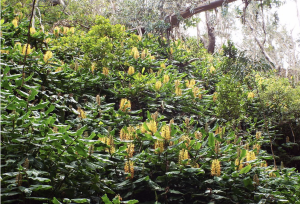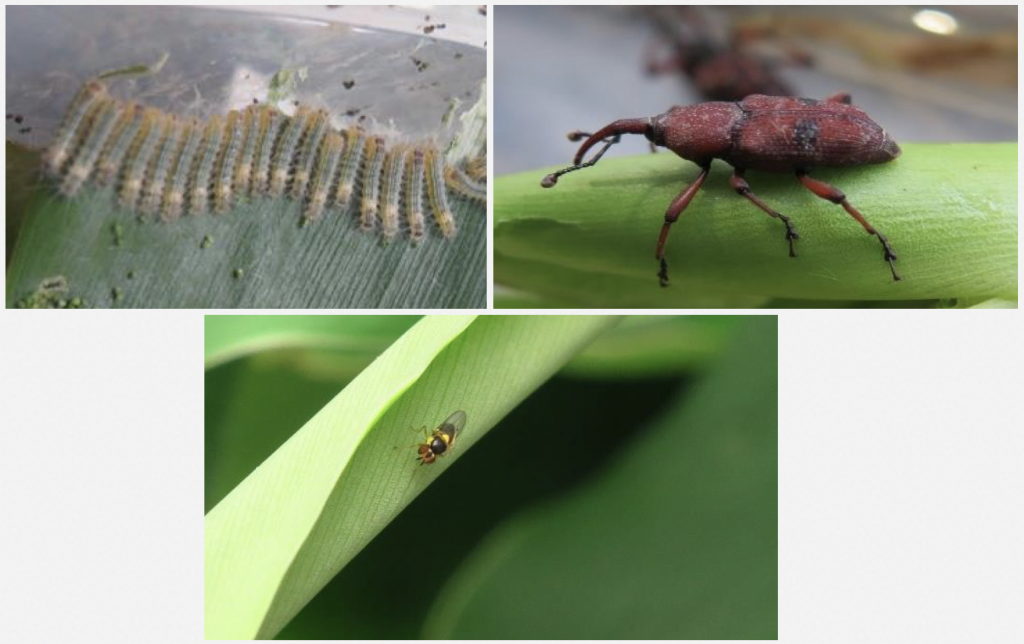THE TARGET: HIMALAYAN (KAHILI) GINGER (HEDYCHIUM GARDNERIANUM)

Hedychium gardnerianum overtaking a hillside. Photo Credit: Forest & Kim Starr.
Impacts
While there are a wide variety of ginger species naturalized in Hawaiʻi, a few pose serious threats to our native forests. None are as problematic as Himalayan ginger or Hedychium gardnerianum, considered one of the world’s 100 worst invasive species by the IUCN. H. gardnerianum stalks grow 1.5-2m tall from dense mats of rhizomes (underground stems of the plant) that quickly smother the forest floor. These large thickets easily grow in shade and dominate the understory of many Hawaiian forests where they outcompete native understory species and prevent native tree seedlings like ʻōhiʻa lehua from establishing. This can permanently alter and diminish native ecosystems.
Report this species if seen on Molokai
Distribution
This horticultural introduction of H. gardnerianum is found on all major Hawaiian islands. The weed, originating from the Himalayas, thrives in moist, forested lands and is a pest of areas worldwide, including New Zealand, the Federated States of Micronesia, South Africa, and Jamaica, among others.
H. gardnerianum has also been called kahili ginger due to its similarity to the kāhili feather staffs symbolic of Hawaiian aliʻi. However, many have taken to calling the plant Himalayan ginger given that the species is native to the Himalayas. A Hawaiian name can potentially mislead people to believe it is a native species.
The candidate(s):

Potential natural enemies: Artona sp., Metapriodictes sp., and Merochlorops sp.
- Since 2008, CABI, an international not-for-profit organization based in the UK, has been funded by a consortium of sponsors from Hawaiʻi and New Zealand to find a biological control for H. gardnerianum. Early work has focused on cataloging all the potential herbivores and pathogens of H. gardnerianum in its native range and completing genetic diagnostics of the H. gardnerianum plants found in New Zealand and Hawaiʻi where the weed will be targeted.
- Early testing in the UK and field testing in India have explored a variety of potential natural enemies, including flies from the genus Merochlorops, large, conspicuous weevils from the genus Metaprodictes, and moth larvae from the genus Artona, among others.
Timeline of Project Progress:
- Results completed to date have found some of the natural enemies may not be specific or damaging enough to the target weed and could be ruled out.
- Current work is focused on obtaining permits to allow some of the prioritized natural enemies to enter New Zealand for further testing.
- If results show that a natural enemy(s) appear promising, further testing of Hawaiian specific flora, followed by the potential development of an Environmental Assessment (EA) would be the next steps in the process.
For more information, see:
- List of IUCN’s 100 Worst Invasive Species in the World, including H. gardnerianum
- Summary of earlier CABI report on H. gardnerianum biological control
- USDA Weed Risk Assessment of Himalayan Ginger
